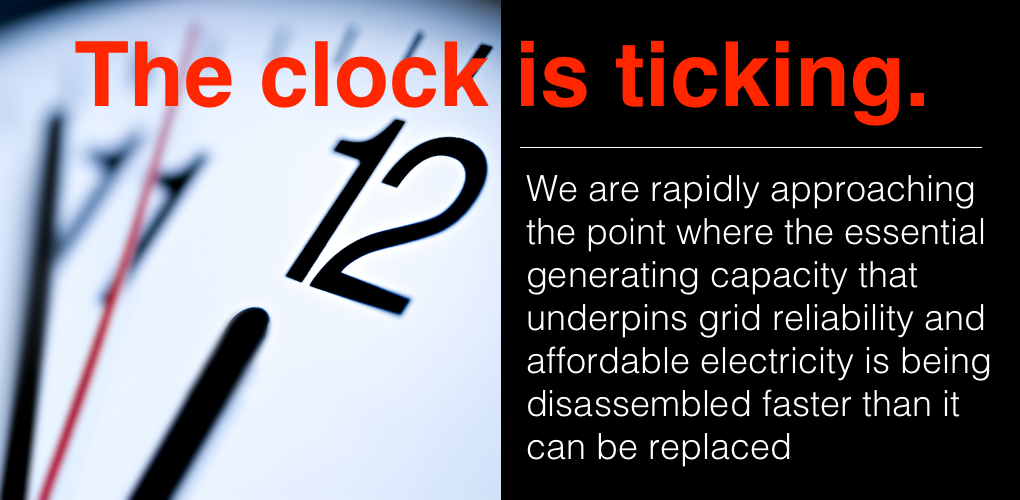
The Grid Reliability Crisis Spreads to the Midwest
Just a few months ago, the North American Electricity Reliability Corporation (NERC) warned that capacity retirements and the rapid remaking of the grid will pose tremendous challenges to reliability over the next decade. It was a warning coming on the heels of the grid catastrophe in Texas and startling blackouts in California that some tried to dismiss as anomalies. But it’s a warning already proving prescient with alarming news of a capacity shortfall from the Midcontinent Independent System Operator (MISO), the grid operator for 15 states and the Canadian province of Manitoba.
In MISO’s latest capacity auction, which is supposed to ensure adequate dispatchable generating capacity, prices in one of its regions jumped 50-fold. This unheard-of surge was the market saying there’s simply not enough dispatchable generation available to reliably cover demand.
This stunning auction was the culmination of a crisis a decade in the making. Poor market design that suppressed capacity prices and pushed well operating, essential coal capacity into retirement is now bearing its ugly fruit. David Patton, MISO’s independent market monitor, said an ongoing effort to address market problems has proven “woefully inadequate.” He continued, “If we’re going to say reliability is an imperative, we need to fix this.”
MISO has pointed to rising demand from economic recovery and coal plant retirements as the key factors in the capacity shortfall. What’s particularly interesting is that MISO isn’t short on capacity, it’s short on reliable capacity.
While capacity additions have been up in MISO over the last few years, those additions have been primarily weather-dependent solar and wind power that get just partial credit in capacity auctions since they can’t be counted on to deliver power 24-7.
With more coal plant retirements coming, potentially supercharged by a regulatory push from the Biden administration, the dispatchable capacity crisis in MISO and other markets is poised to get far worse.
A Regulatory Push over the Edge
Even before this capacity auction, MISO wrote to the U.S. Environmental Protection Agency (EPA) warning of the dire consequences that could come from just one piece of EPA’s regulatory agenda that will force dozens of needed plants around the country offline. MISO wrote about the potential loss of five of its plants, warning, “the loss [due to closure] of any significant portion of the 3.1 GW from the five generators considered… would push resource adequacy coverage of regional demand into dangerous territory.” We now know MISO is already in dangerous territory; another push from EPA could prove catastrophic.
Utilities and regulators have been warning about this dispatchable capacity crisis for years.
Last year, Federal Energy Regulatory Commission (FERC) commissioner James Danly wrote, “There are any number of problems that lead to reliability failures, but I want to focus on one in particular: market failure. The bulk power markets provide inadequate cost recovery, and thus investment, to ensure reliability.”
Market failure coupled with EPA’s long-running agenda to accelerate coal plant closures has left large swaths of the country in a fuel security deficit. The coal fleet has been – and continues to be – pushed aside far faster than reliable alternatives are being put in place. MISO’s crisis illustrates the point.
While moving power from other regions in MISO territory could help alleviate the capacity shortfall in the Midwest region, there simply isn’t enough transmission capacity to do so. Nor is there any quick fix to alleviate the bottleneck.
MISO intends to look at several projects that could increase ties between regions, but it will be years before a study is completed and they receive board approval to take action. It will be years longer to get these lines permitted and actually built. Building transmission infrastructure anywhere has proven a painfully difficult and time-intensive process that has faced local opposition at nearly every turn.
MISO’s crisis is indicative of a problem touching nearly every corner of the country. The generating capacity that has underpinned grid reliability, as well as electricity affordability, is being disassembled much, much faster than utilities can replace it. It’s a perfect storm of market failure and regulatory overreach in place of sound energy policy.
While there’s still time for a course correction, the clock is ticking ever closer to midnight. A reevaluation of the facts on the ground that recognizes how essential existing coal capacity is to maintaining reliability is absolutely essential.
- On April 27, 2022
